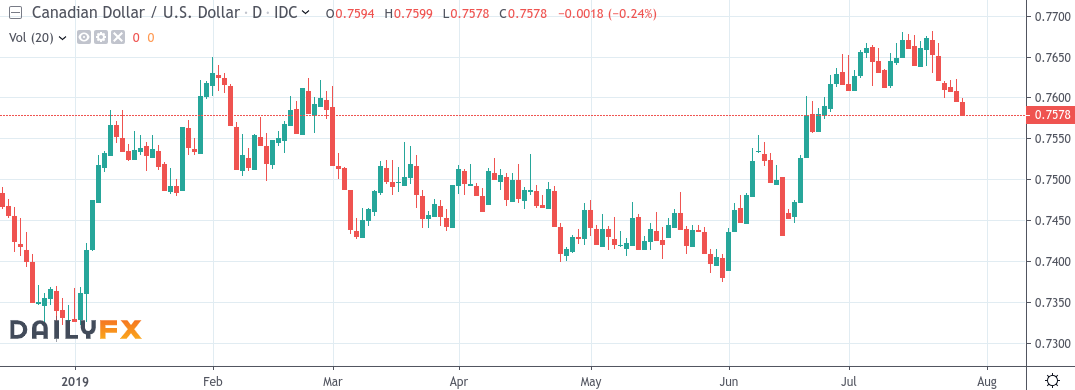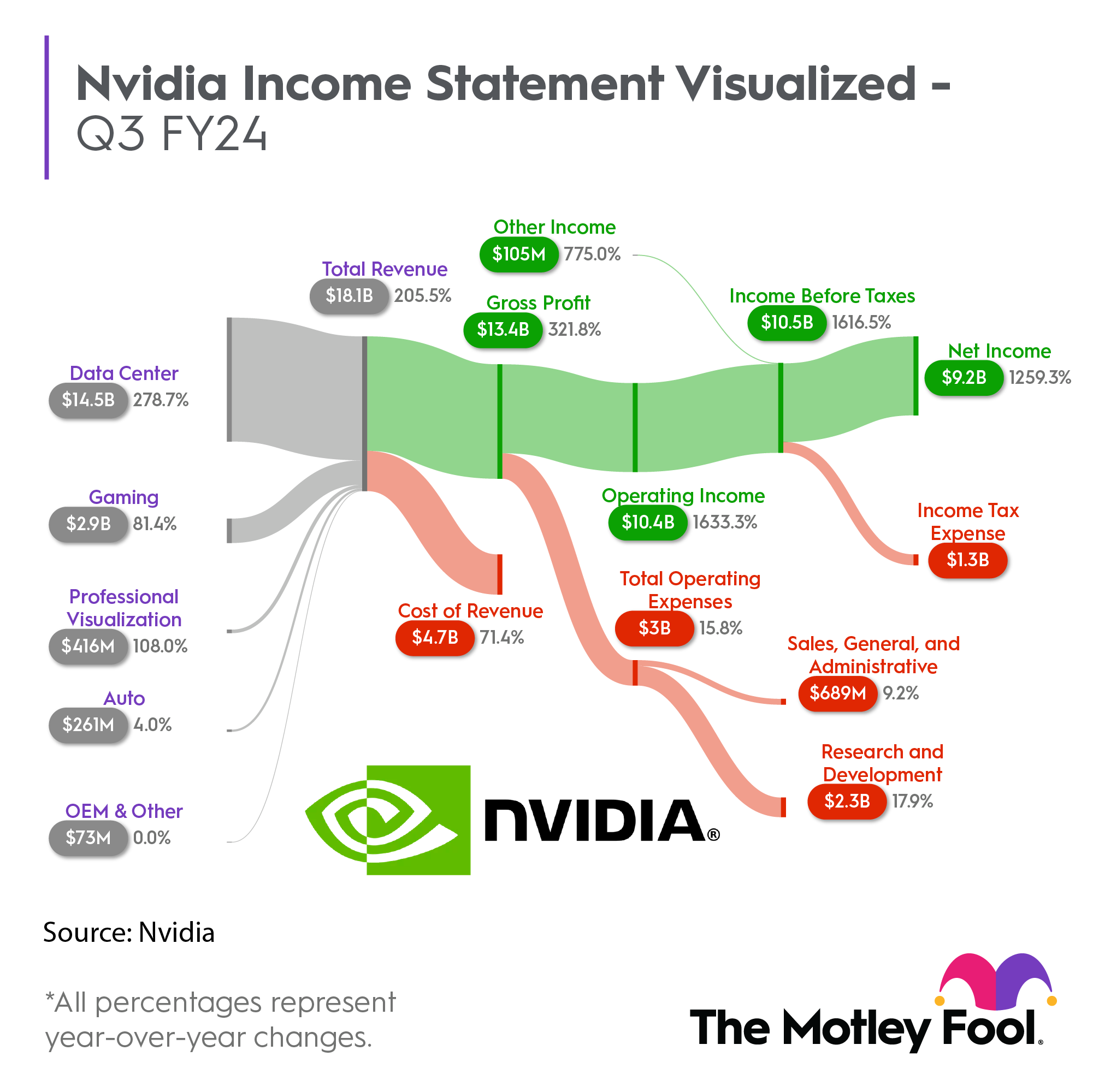Understanding The Canadian Dollar's Recent Volatility

Table of Contents
Global Economic Factors Influencing CAD Volatility
The Canadian dollar, like most currencies, is susceptible to global economic shifts. Its value is heavily influenced by external factors, particularly the strength of the US dollar (USD) and the price of commodities.
Impact of US Dollar Strength
The CAD and USD share a strong correlation. A strengthening USD typically leads to a weakening CAD, due to several factors. The US remains Canada's largest trading partner, and a stronger USD makes Canadian exports more expensive for US buyers, reducing demand and impacting the CAD's exchange rate.
- USD interest rate hikes and their effect on CAD: When the US Federal Reserve raises interest rates, it attracts more foreign investment to the US, increasing demand for the USD and putting downward pressure on the CAD.
- The US economy's performance and its influence on the CAD: A robust US economy generally boosts the USD, indirectly weakening the CAD. Strong economic growth in the US can lead to increased demand for the dollar and decreased demand for the Canadian dollar.
- Safe-haven demand for the USD and its impact on CAD: During times of global uncertainty, investors often flock to safe-haven assets, including the USD. This increased demand for the USD can further depress the CAD's value.
Commodity Prices and Their Role
Canada's economy is heavily reliant on commodity exports, notably oil and lumber. Fluctuations in global commodity prices directly affect the CAD's value. As a major exporter of these resources, Canada’s currency is often referred to as a "commodity currency."
- Impact of oil price changes on CAD: Oil price increases typically strengthen the CAD, while declines weaken it. This is because a significant portion of Canada's exports are energy-related.
- Influence of global demand for Canadian resources: Increased global demand for Canadian commodities boosts their prices, strengthening the CAD. Conversely, reduced demand weakens the currency.
- Geopolitical events impacting commodity markets and the CAD: Geopolitical instability in oil-producing regions or disruptions to global supply chains can significantly impact commodity prices and, consequently, the CAD.
Domestic Economic Factors Contributing to Instability
Internal economic conditions within Canada also play a crucial role in shaping the CAD's volatility. Monetary policy decisions and the overall health of the Canadian economy significantly influence the currency's performance.
Bank of Canada Monetary Policy
The Bank of Canada's monetary policy decisions, particularly interest rate adjustments, have a direct impact on the CAD. Raising interest rates generally strengthens the currency by attracting foreign investment seeking higher returns, while rate cuts can weaken it.
- Impact of interest rate hikes/cuts on the CAD: Interest rate hikes attract foreign investment, strengthening the CAD. Conversely, rate cuts can weaken it as investors seek better returns elsewhere.
- Inflationary pressures and their effect on monetary policy and the CAD: High inflation often leads the Bank of Canada to raise interest rates to curb price increases, impacting the CAD's value.
- Market reaction to Bank of Canada announcements: The market's reaction to Bank of Canada announcements regarding interest rate changes can cause immediate and significant fluctuations in the CAD.
Canadian Economic Growth and Employment
The performance of the Canadian economy, reflected in GDP growth and employment figures, is another key determinant of CAD volatility. Strong economic growth and low unemployment generally support a stronger CAD.
- Relationship between economic growth and CAD strength: A robust Canadian economy typically boosts investor confidence, leading to increased demand for the CAD.
- Impact of unemployment rates on investor confidence and the CAD: High unemployment rates can signal economic weakness, reducing investor confidence and weakening the CAD.
- Government fiscal policies and their influence on the CAD: Government spending and taxation policies can influence economic growth and, consequently, the CAD's value.
Geopolitical Risks and Their Influence on CAD Volatility
Global events and geopolitical risks significantly impact the CAD's stability. Uncertainty in the global landscape often drives investors towards safe-haven assets, putting downward pressure on riskier currencies like the CAD.
Global Uncertainty and Safe-Haven Assets
Wars, political instability, and other global crises often lead investors to seek the safety of assets perceived as less risky, such as the US dollar. This "flight to safety" phenomenon can significantly weaken the CAD.
- Impact of global political tensions on CAD: Geopolitical tensions increase uncertainty, leading investors to move away from riskier currencies like the CAD.
- Investor flight to safety and its effect on the CAD: During times of global uncertainty, investors often shift their investments towards safer assets, diminishing demand for the CAD.
- Examples of geopolitical events that impacted the CAD recently: Recent examples might include specific geopolitical events and their impact on the Canadian dollar exchange rate. (This section requires specific examples which will need to be updated based on the current climate.)
North American Trade Relations
Trade relations between Canada and its major trading partners, particularly the US, play a crucial role in determining the CAD's value. Trade disputes or uncertainties surrounding trade agreements can create volatility.
- Influence of trade tensions on investor confidence: Trade disputes and uncertainty surrounding trade agreements can negatively impact investor confidence and weaken the CAD.
- Potential impact of future trade negotiations on the CAD: Upcoming trade negotiations and their outcomes can significantly influence the CAD's value, creating potential volatility.
- Examples of trade-related events affecting CAD volatility: (This section requires specific examples which will need to be updated based on the current climate.)
Conclusion
The recent Canadian dollar volatility is a complex issue stemming from the interplay of global economic factors (USD strength, commodity prices), domestic economic conditions (monetary policy, economic growth), and geopolitical risks (global uncertainty, trade relations). Understanding the interconnectedness of these factors is crucial for navigating the challenges posed by this instability. To effectively manage the risks associated with Canadian dollar volatility, stay informed about these influencing factors. Follow future articles for further analysis of Canadian dollar trends. For personalized investment advice related to the CAD, consult a qualified financial professional. Staying informed is key to understanding and managing the complexities of Canadian Dollar Volatility.

Featured Posts
-
 Celebrities Affected By The La Palisades Fires A Comprehensive List Of Home Losses
Apr 24, 2025
Celebrities Affected By The La Palisades Fires A Comprehensive List Of Home Losses
Apr 24, 2025 -
 Teslas Q1 2024 Earnings Report A 71 Drop In Net Income
Apr 24, 2025
Teslas Q1 2024 Earnings Report A 71 Drop In Net Income
Apr 24, 2025 -
 New Google Fi 35 Unlimited Plan A Budget Friendly Option
Apr 24, 2025
New Google Fi 35 Unlimited Plan A Budget Friendly Option
Apr 24, 2025 -
 Fiscal Responsibility A Missing Element In Canadas Liberal Vision
Apr 24, 2025
Fiscal Responsibility A Missing Element In Canadas Liberal Vision
Apr 24, 2025 -
 Is Google Fis 35 Unlimited Plan Right For You A Detailed Review
Apr 24, 2025
Is Google Fis 35 Unlimited Plan Right For You A Detailed Review
Apr 24, 2025
